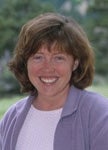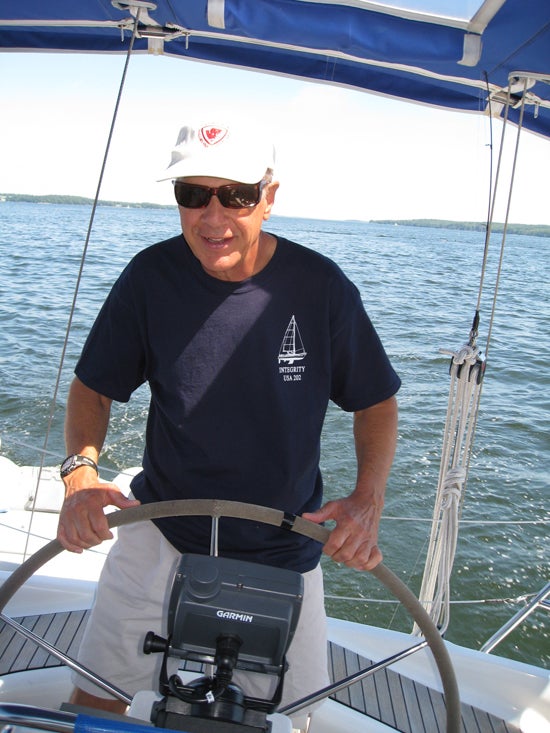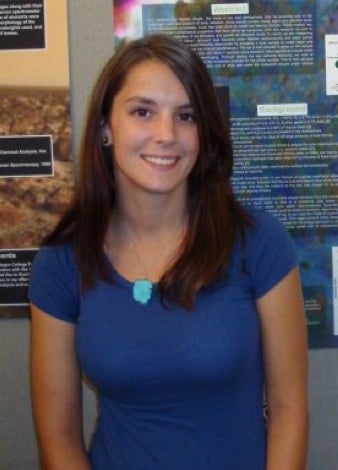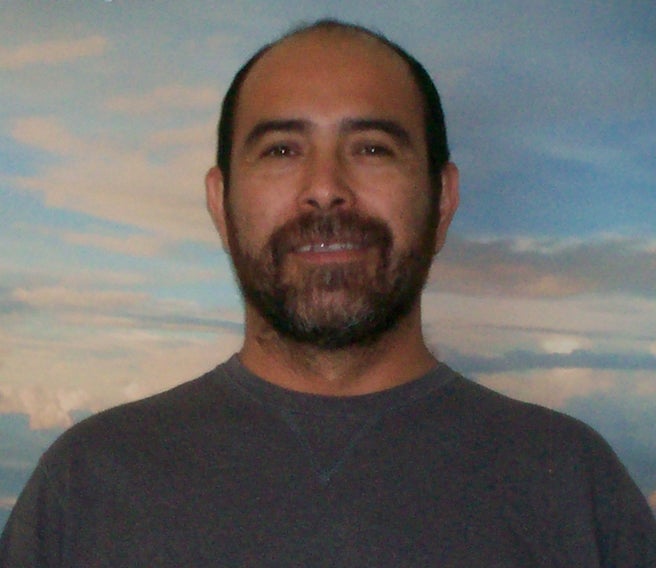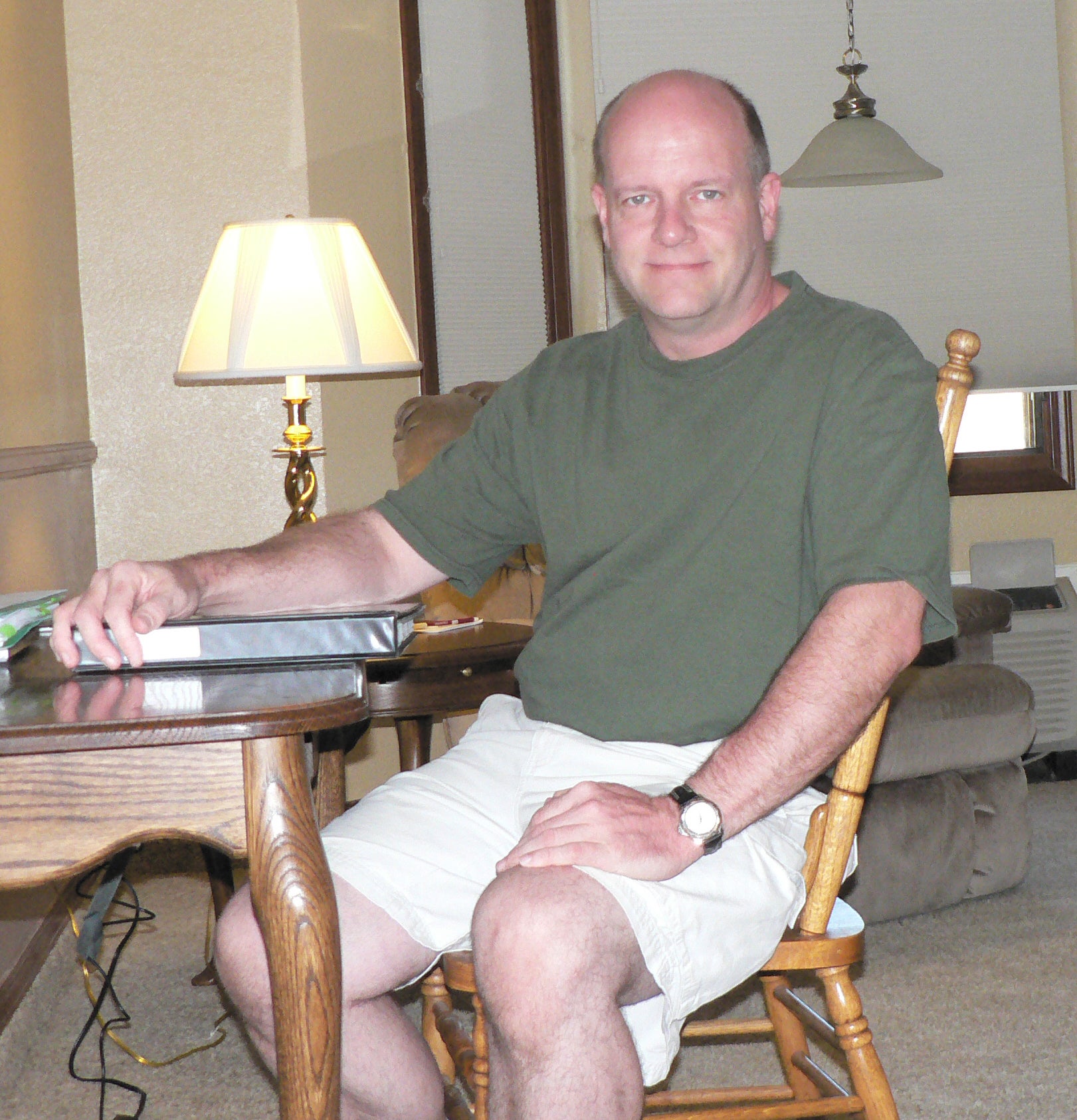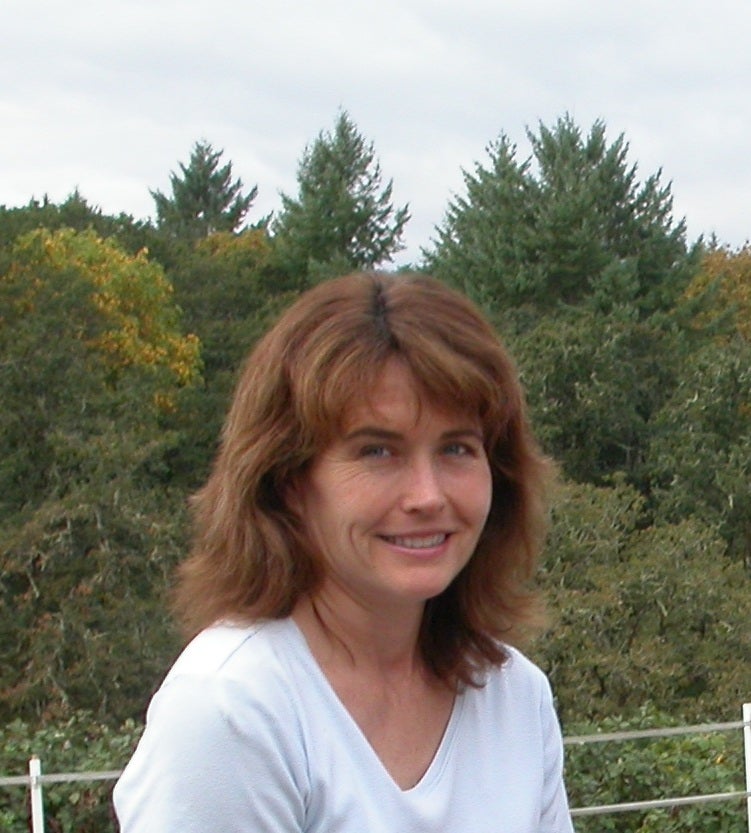Teresa Campos :: Fast Ozone Lead Scientist
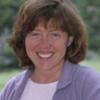 Bio coming soon!
Bio coming soon!
>> Teresa Campo is the lead scientist for the Fast Ozone Analyzer
Dick Friesen :: CVI Scientist
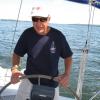 Dick will be supporting the Counterflow Virtual Impactor (CVI) on the NSF/NCAR Gulfstream V. He is an engineer in the Earth Observing Laboratory and the Research Aviation Facility. He has been at NCAR for 40+ years serving in many different roles, as instrumentation engineer, software engineer, scientist, project manager, interim Facility manager and most recently as the Project engineer on the HIAPER acquisition and development effort. Currently semi-retired, he still enjoys participating in field projects and working with the NSF/NCAR GV instrumentation. Outside interests include skiing, hiking, biking, rock concerts and as you can see from the picture air-sea interaction studies.
Dick will be supporting the Counterflow Virtual Impactor (CVI) on the NSF/NCAR Gulfstream V. He is an engineer in the Earth Observing Laboratory and the Research Aviation Facility. He has been at NCAR for 40+ years serving in many different roles, as instrumentation engineer, software engineer, scientist, project manager, interim Facility manager and most recently as the Project engineer on the HIAPER acquisition and development effort. Currently semi-retired, he still enjoys participating in field projects and working with the NSF/NCAR GV instrumentation. Outside interests include skiing, hiking, biking, rock concerts and as you can see from the picture air-sea interaction studies.
>> Dick Friesen monitors the Counterflow Virtual Impactor (CVI)
Jennifer Haase :: Lead GISMOS Scientist
Jennifer Haase is a professor at Purdue University and lead scientist for the GISMOS instrument during the PREDICT campaign. She will be collecting measurements on the NSF/NCAR GV aircraft from Saint Croix with her team of graduate students during the deployment. Jennifer also works with researchers from the Jet Propulsion Laboratory, University of California at Davis, and National Central University in Taiwan on assimilating the data into weather models, where they hope these new data will improve predictions of hurricane intensity. Jennifer works on other research projects with unique uses for GPS signals, including detecting plasma motions in the ionosphere, determining wind speed from GPS signals reflected off the ocean surface, and even following earthquake shaking from the motion of high precision GPS instruments.
>> Jennifer Haase is the lead scientist for the GISMOS instrument
Julie Haggerty :: MTP Lead Scientist
Julie is a Project Scientist at the NCAR Research Aviation Facility. In this capacity, Julie supports radiometric instrumentation on the NSF/NCAR GV and C-130 aircraft. During PREDICT she will be responsible for the Microwave Temperature Profiler, a radiometer which measures microwave emission from oxygen molecules. From these measurements of microwave emission, she will retrieve temperature profiles several kilometers above and below the aircraft.
>> Julie is the lead scientist for the Microwave Temperature Profiler (MTP)
Alexandria Johnson :: GISMOS Technician
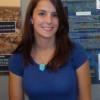 Alexandria is a graduate student at Purdue University seeking her PhD in Atmospheric Sciences. She will be acting as a GISMOS technician during the PREDICT flight campaign responsible for pre- and post-flight system preparations and data retrieval. The goal of GISMOS is to provide dense sounding measurements of atmospheric refractivity (a function of temperature, pressure, and water vapor) with high vertical resolution both in and around the systems of interest through the use of GPS radio occultation. These profiles, and the information on the variables contained within, have the potential to be useful when assimilated into numerical weather prediction models.
Alexandria is a graduate student at Purdue University seeking her PhD in Atmospheric Sciences. She will be acting as a GISMOS technician during the PREDICT flight campaign responsible for pre- and post-flight system preparations and data retrieval. The goal of GISMOS is to provide dense sounding measurements of atmospheric refractivity (a function of temperature, pressure, and water vapor) with high vertical resolution both in and around the systems of interest through the use of GPS radio occultation. These profiles, and the information on the variables contained within, have the potential to be useful when assimilated into numerical weather prediction models.
>> Alexandria monitors the GISMOS instrument
Carlos Lopez :: Scientist
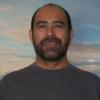 Carlos hold a PhD in physics and works as a research scientist in the Geophysical Research Center at New Mexico Tech. He is interested in tropical meteorology, mainly in tropical cyclones. His research focuses on the analysis of observational data, in particular on Doppler radar measurements. Carlos has actively participated in 3 previos field campaigns involving reaserch aircraft.
Carlos hold a PhD in physics and works as a research scientist in the Geophysical Research Center at New Mexico Tech. He is interested in tropical meteorology, mainly in tropical cyclones. His research focuses on the analysis of observational data, in particular on Doppler radar measurements. Carlos has actively participated in 3 previos field campaigns involving reaserch aircraft.
During the PREDICT campaign, he'll participate as a flight scientist with the main goal of finding observational support for various scientific hypothesis about the genesis of hurricanes. Currently, he is working on a system that allows to combine dropsonde and Doppler radar data to better elucidate the kinematics and thermodynamics of the systems that we will explore during this campaign.
Rich Lueb :: Fast Ozone Technician
Image & bio coming soon!
>> Rich Lueb monitors the Fast Ozone Analyzer
Denise Montzka :: Fast Ozone Technician
Denise is part of the CARI group (Community Airborne Research Instrumentation) of the Atmospheric Chemistry Division (ACD) of NCAR. She is an Associate Scientist III and has been supporting field experiments for ACD for 18 years. For PREDICT Denise will be supporting Teresa Campos in her measurement of Ozone and Water in the atmosphere from the NSF/NCAR GV aircraft.
>> Denise Montzka monitors the Fast Ozone Analyzer
Brian Murphy :: GISMOS Technician
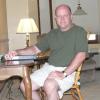 Brian is beginning this fall as a PhD student in the Earth and Atmospheric sciences at Purdue University. His advisor, Dr. Haase, which has led to his working on GISMOS for the PREDICT campaign. His background is in physics (BA and MS) and for the past few years he has been teaching math and physics classes at Ivy Tech Community College and Purdue University.
Brian is beginning this fall as a PhD student in the Earth and Atmospheric sciences at Purdue University. His advisor, Dr. Haase, which has led to his working on GISMOS for the PREDICT campaign. His background is in physics (BA and MS) and for the past few years he has been teaching math and physics classes at Ivy Tech Community College and Purdue University.
>> Brian Murphy monitors the GISMOS instrument
Darin Toohey :: CVI Scientist
Darin Toohey grew up in La Habra, CA, where he was active in sports (mostly baseball),
music (playing violin, guitar and saxophone), and hiking and camping. He became hooked
on science after seeing the Apollo 11 Moon walks. He received degrees in physics
and chemistry at Cal State University, Fullerton, in 1982, after which he decided to pursue
advanced degrees in applied physics at Harvard University (M.S. in 1984 and Ph.D. in 1988).
As a graduate student and postdoc at Harvard, Prof. Toohey carried out laboratory and field studies to constrain the role of chlorine and bromine species on polar stratospheric ozone. He was a
professor of earth system science at the University of California, Irvine, from 1991 until 1998,
and he currently a professor of atmospheric and oceanic sciences at the University of Colorado,
Boulder. For PREDICT, Prof. Toohey will be combining his UltraHigh Sensitivity Aerosol
Spectrometer (UHSAS) with a Counterflow Virtual Impactor to measuring submicron size
distributions of ice and droplet residuals. This work will examine the role of continental pollution
and dust in condensation and convection in tropical storms. In his spare time, Prof. Toohey enjoys
biking, trekking, and mountain climbing with his wife Barbara.
>> Darin Toohey monitors the Counterflow Virtual Impactor (CVI)
Cindy Twohy :: CVI Lead Scientist
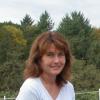 Cindy will be flying on the NSF/NCAR GV aircraft during PREDICT, catching droplets and ice crystals from clouds with an instrument called the Counterflow Virtual Impactor (CVI). The CVI measures total condensed water in the clouds and also looks at what's inside the cloud particles--for example, sea-salt, pollution, or even Saharan dust! We're trying to learn which of these particles form ice crystals in the atmosphere, and how that affects storm formation, rain and snow, and global climate change. Cindy went to graduate school at the University of Washington, where they had a research aircraft. Since then, she's been on over thirty different projects flying all over the world including Australia, Bahrain, Costa Rica, and India. For ten years, she was a scientist for the National Center for Atmospheric Research in Colorado, and then landed back at Oregon State University as a research professor. She and her husband grow grapes for wine, and when not traveling enjoys horseback riding, gardening, and collecting antique books.
Cindy will be flying on the NSF/NCAR GV aircraft during PREDICT, catching droplets and ice crystals from clouds with an instrument called the Counterflow Virtual Impactor (CVI). The CVI measures total condensed water in the clouds and also looks at what's inside the cloud particles--for example, sea-salt, pollution, or even Saharan dust! We're trying to learn which of these particles form ice crystals in the atmosphere, and how that affects storm formation, rain and snow, and global climate change. Cindy went to graduate school at the University of Washington, where they had a research aircraft. Since then, she's been on over thirty different projects flying all over the world including Australia, Bahrain, Costa Rica, and India. For ten years, she was a scientist for the National Center for Atmospheric Research in Colorado, and then landed back at Oregon State University as a research professor. She and her husband grow grapes for wine, and when not traveling enjoys horseback riding, gardening, and collecting antique books.
>> Cindy Twohy is the lead scientist for the Counterflow Virtual Impactor (CVI)
Kirk Ullmann :: Fast Ozone Technician
Image & bio coming soon!
>> Kirk Ullmann monitors the Fast Ozone Analyzer
Mark Zondlo :: VCSEL Scientist
 Professor Zondlo-s group conducts research in global climate change and air quality by deploying novel optical sensors in the atmosphere and analyzing the data as part of field campaigns on local to global scales. Water vapor and ammonia are examples of two important trace gas species that are critical to aerosol and cloud particle processes. Recent advances in laser-based sensors allow for unprecedented capabilities to observe these and other trace gases in the atmosphere. Instrumentation developed in the laboratory is deployed as part of international field experiments on aircraft-, network-, and ground-based platforms. Specific research areas include cloud and aerosol particle formation, trends and distribution of water vapor in the atmosphere, and emissions of greenhouse gases to the troposphere.
Professor Zondlo-s group conducts research in global climate change and air quality by deploying novel optical sensors in the atmosphere and analyzing the data as part of field campaigns on local to global scales. Water vapor and ammonia are examples of two important trace gas species that are critical to aerosol and cloud particle processes. Recent advances in laser-based sensors allow for unprecedented capabilities to observe these and other trace gases in the atmosphere. Instrumentation developed in the laboratory is deployed as part of international field experiments on aircraft-, network-, and ground-based platforms. Specific research areas include cloud and aerosol particle formation, trends and distribution of water vapor in the atmosphere, and emissions of greenhouse gases to the troposphere.
>> Professor Zondlo is the lead scientist for the VCSEL Hygrometer
Data Set Documentation Guidelines
Data Submission Instructions
PREDICT HIAPER Documentation Summary
St Croix January Site Survey Report
Scientific Program Overview
Experimental Design Overview
Pre-Field Documentation
PREDICT Computer Data & Software Facility Staff
PREDICT Field Project Services Staff
PREDICT In-Situ Sensing Facility Staff
PREDICT Principal Investigators
Marsupial Tracking
IFEX-2010 Web Site at NOAA/AOML
IFEX proposed flight patterns
Caribbean Forecast Forum 2010
2010 National Hurricane Operations Plan
